Remote fan entertainment – the lifebelt for sports in the coronavirus pandemic
If 100% of your supporters have to cheer remotely, building on digitalization is a must. How clubs can not only deliver a real-time remote fan experience during matches, but regenerate the lost matchday revenues? This is the question that many in the sports industry are contemplating right now. All sport organizations are walking in the same shoes and this is a kind of long term headache which could not be handled with ostrich policy.
The Bundesliga already restarted but it could take more than six months for the spectators to return. A leaked Italian government document suggests that fans will not be allowed to support in their stadiums until January 2021. The Premier League’s earliest return date is the middle of June. La Liga has been given the green light to restart from June 8, following guidelines from Spain’s Ministry of Health.
Top-tier teams with global fanbase could be left without on-site support and matchday revenues for six months, which leads to severe emotional and economic consequences.
The atmosphere seems to be irreplaceable, however there are some solutions that can and will help clubs and leagues to do so. These digital innovations together with a clever concept by clubs will find the ways to directly or indirectly make up for the lost matchday revenues either as part of loyalty marketing campaigns, premium feature sales or opening up new advertising platforms that reach directly and individually the consumers in their homes.
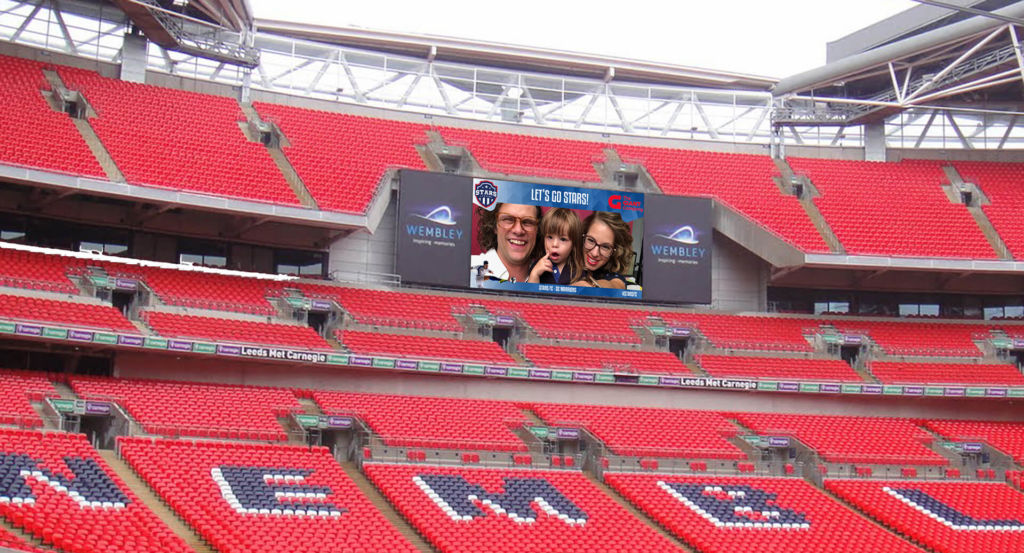
After the fire-fighting it is time to build a rebalanced strategy
Research conducted by Seton Hall University made some alarming discoveries that could fundamentally harm the sports industry. According to the report, 3 out of 4 Americans would not attend live sports events without a Covid-19 vaccine and only 76 percent of them would watch live National Football League (NFL) broadcasts with the same interest as before.
It is therefore a vital need for clubs to think of solutions that can ease this pain, before or even after the restart. Clubs will have to offer added value for fans in their homes, in order to avoid a long term financial crisis and permanent competitive disadvantage in the market.
Let’s do the math and take an actual example to illustrate the possible financial loss. Hamburger SV as a title contender of Bundesliga II has 26.000 season ticket holders, to whom they would have to return a proportional sum of the price. There were 5 home matches left for the team after which – considering that the average season ticket price is €400 – each fan would have to receive at least €117.5 at the end of the season. If all 26.000 fans decide that they claim this amount back, it would mean a loss of more than €3.000.000 for the club, and we are only talking about already earned revenue. Therefore, it is vital for the clubs to offer some kind of creative, additional service for the avid fans. The size of the loss will keep on increasing: the next step after damage control is to figure out how to sell season tickets for the next year, when it will be crucial to offer digital products and services in the portfolio such as e-season tickets, or other VIP solutions.
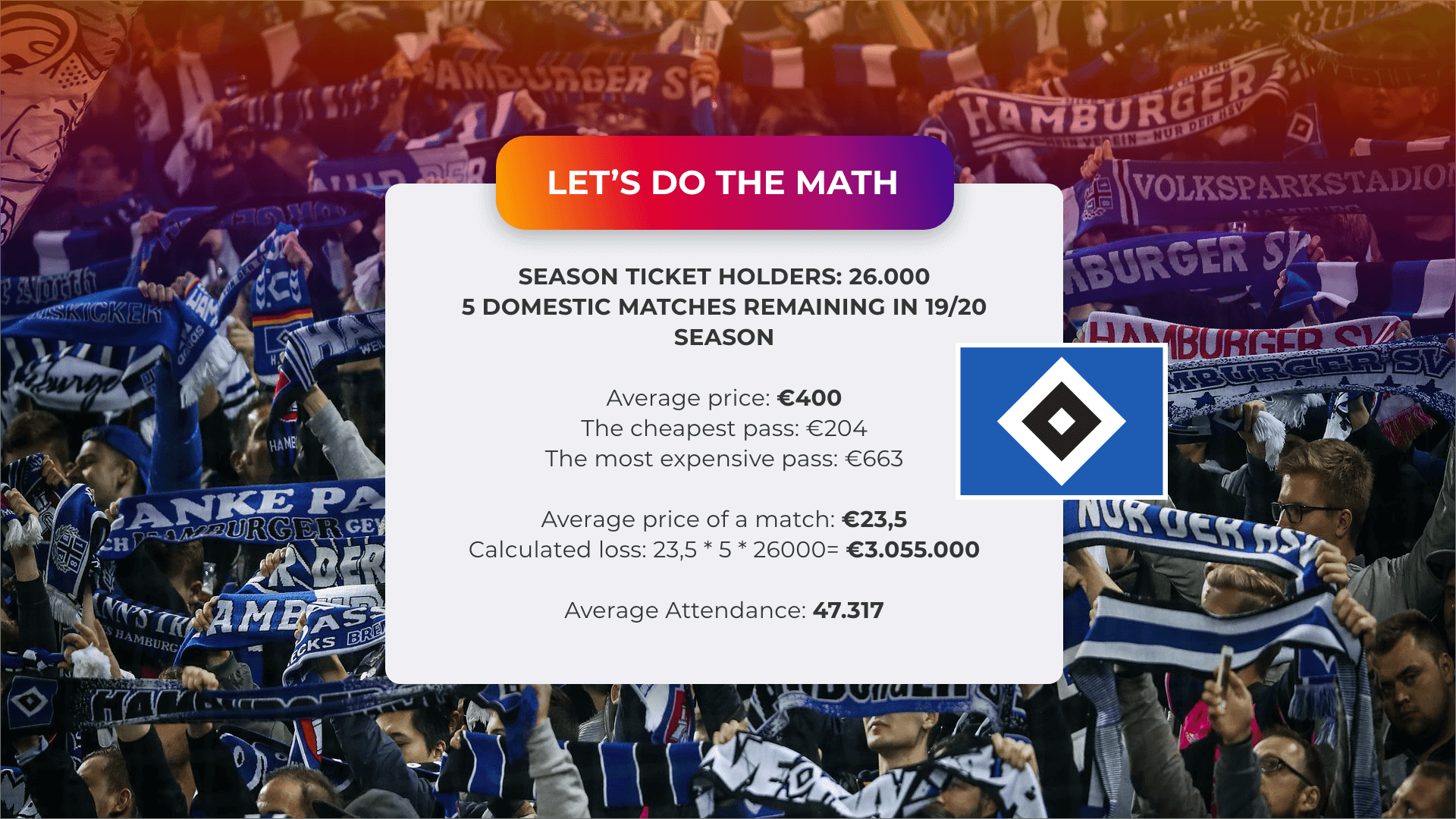
Fans are hungry even for the most basic creative solutions
Borussia Mönchengladbach were one of the first ones to come up with a solution that simulates fan presence by having season ticket holders represented with cardboard figures in their seats for matches. Gladbach fans can purchase the ‘right to participate’ for €19 (US$20.50), which also sees them receive their own cardboard cutout at the end of the season. The huge demand from the fans shows that even this simple solution can earn the backing of supporters, with more than 12.000 already sold. Although this idea is brilliant and got plenty of attention, it is limited in terms of monetisation with 59.000 spots available for the four remaining Gladbach home games this season.
The other most common example came from Denmark, where FC Midtjylland have installed giant screens in the parking lot of their MCH Arena to allow fans to watch matches from their cars when the Superliga resumes following the suspension due to the coronavirus outbreak. In what the league leaders described as the best possible alternative to a full stadium, players inside the empty facility will also feel the presence of 10.000 fans with live footage of the car park screened inside the venue. The club said more than 2.000 of their 12.000 parking spaces will be opened up around the club’s stadium and fans will also be able to access TV commentary through their car radios.
After these two remarkable solutions we could also see many other ideas: plastic dolls dressed in club jerseys (South-Korea), Zoom-based tablets on the seats (Denmark), or e-mail based cheering image sending (Germany). What they have in common is that the solutions as a whole are not scalable and hard to monetize their value in the long term or sell them as a VIP service.
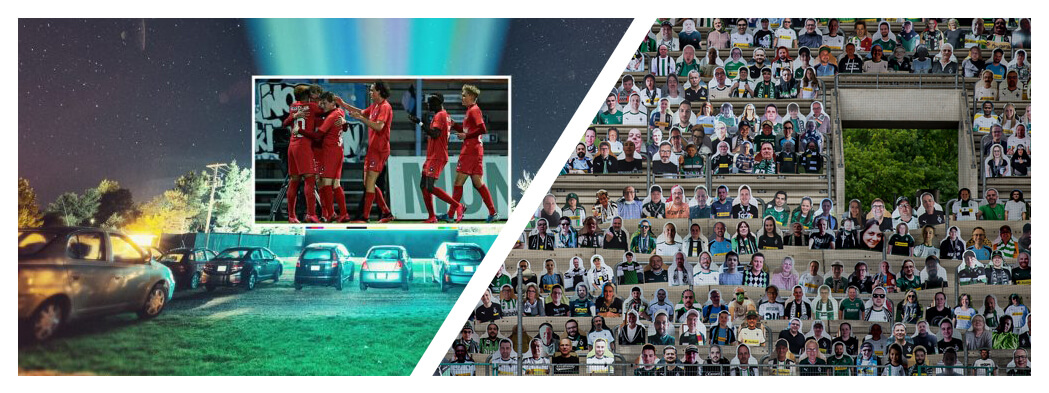
If you can’t count on the matchday atmosphere, create a catchy digital experience
To expand the horizon, a more holistic approach is needed. Clever digital concepts could create more ways to directly or indirectly make up for the lost matchday revenues. In case of crowded stands, when clubs already close to maximised their in stadia revenues, Seyu is an extremely useful tool for reaching out for remote-fans (accounting for 99% of supporters for many teams), but in case of matches behind closed doors it turns it to a real must have solution, as no one can actually cheer for their team in person.
Regardless where they are in the world at the time of the matches, supporters’ images can appear in real-time on all screens in the stadium on and off game time, this way the players would see the fans rooting for them from their homes in the changing rooms, players’ tunnel, giant screens and perimeter led boards too. The images submitted by the fans appearing on the perimeter LED wall and large screens inside the stadium, giving the players and the technical staff real-time support with the well-known chants and encouraging messages. Rewarded fans can also spot themselves during TV broadcasts, thereby strengthening their sense of belonging to the club and reproducing the fact that they are also active participants in the victory and success of their team.
So if avid fans in Mönchengladbach are willing to pay €19 for a static cardboard figure, what could be the value of displaying in real-time a self-made image which is guaranteed to be visible in a prominent space on-site?
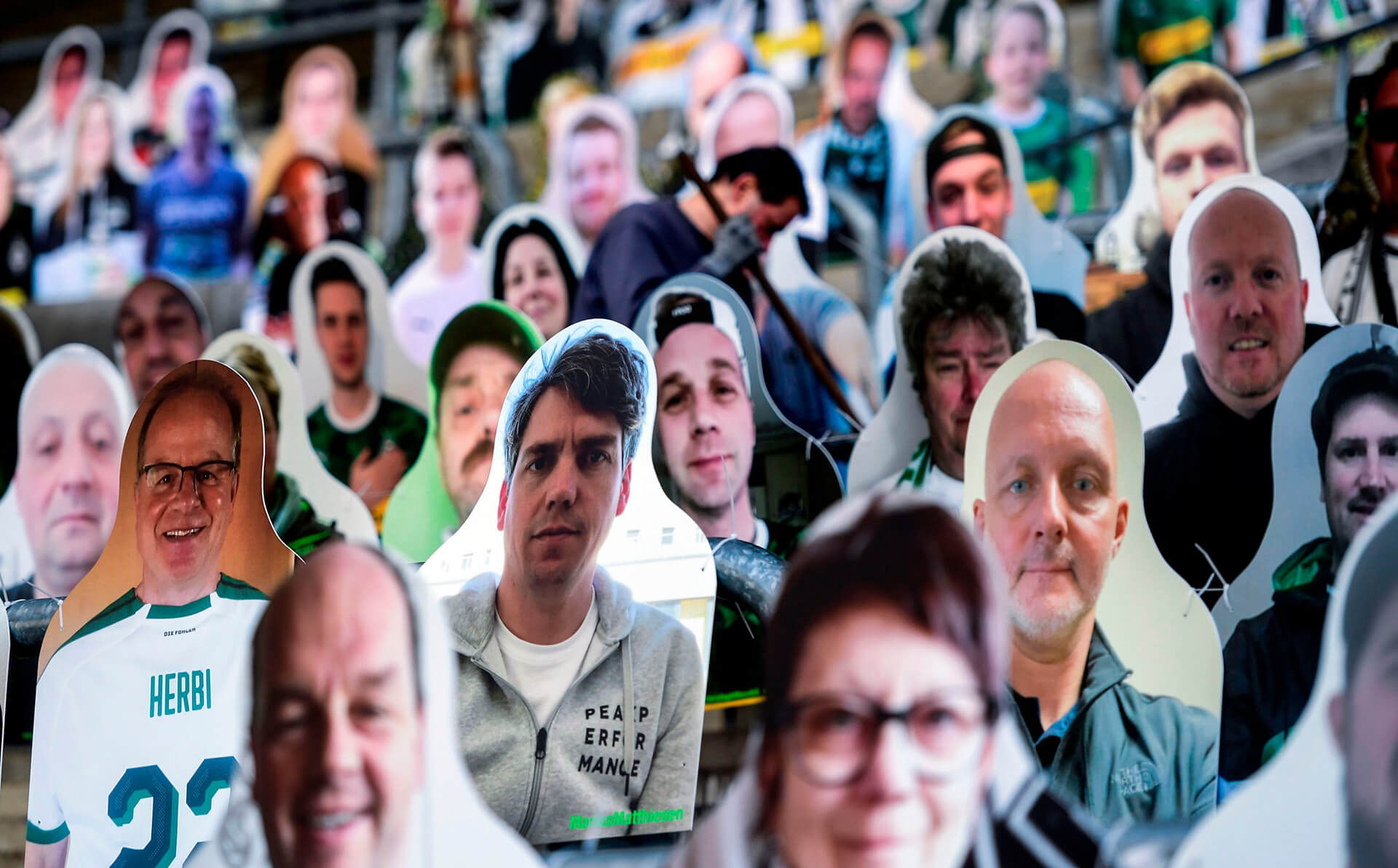
Convert the record match views into record revenue
A match in the german top flight is watched by an average of 2.000.000 fans on TV. According to the announcement of Sky Sports this number significantly multiplied on the first weekend of the returning season and more than 5 million people watched the Bundesliga (the Dortmund-Schalke “Revierderby”) only in Germany, which proves a huge demand. Due to that german teams will compete again weeks before any other top league, this competitive advantage generates the possibility of extra attention and therefore income on the global market, as billions of fans are hungry for live sport events. Therefore, a selfie displayed on the advertising platforms during live broadcast could be offered as a premium service for fans, generating matchday revenue. Alongside of the pitch, technically 3.600 selfies can be displayed during one game, which represents only about 0,072% of fans watching, therefore this service certainly can be offered on a higher price. For example if we set the price on €100 on an official match, it could generate 360.000€ on a single day, using only one service of the Seyu portfolio.
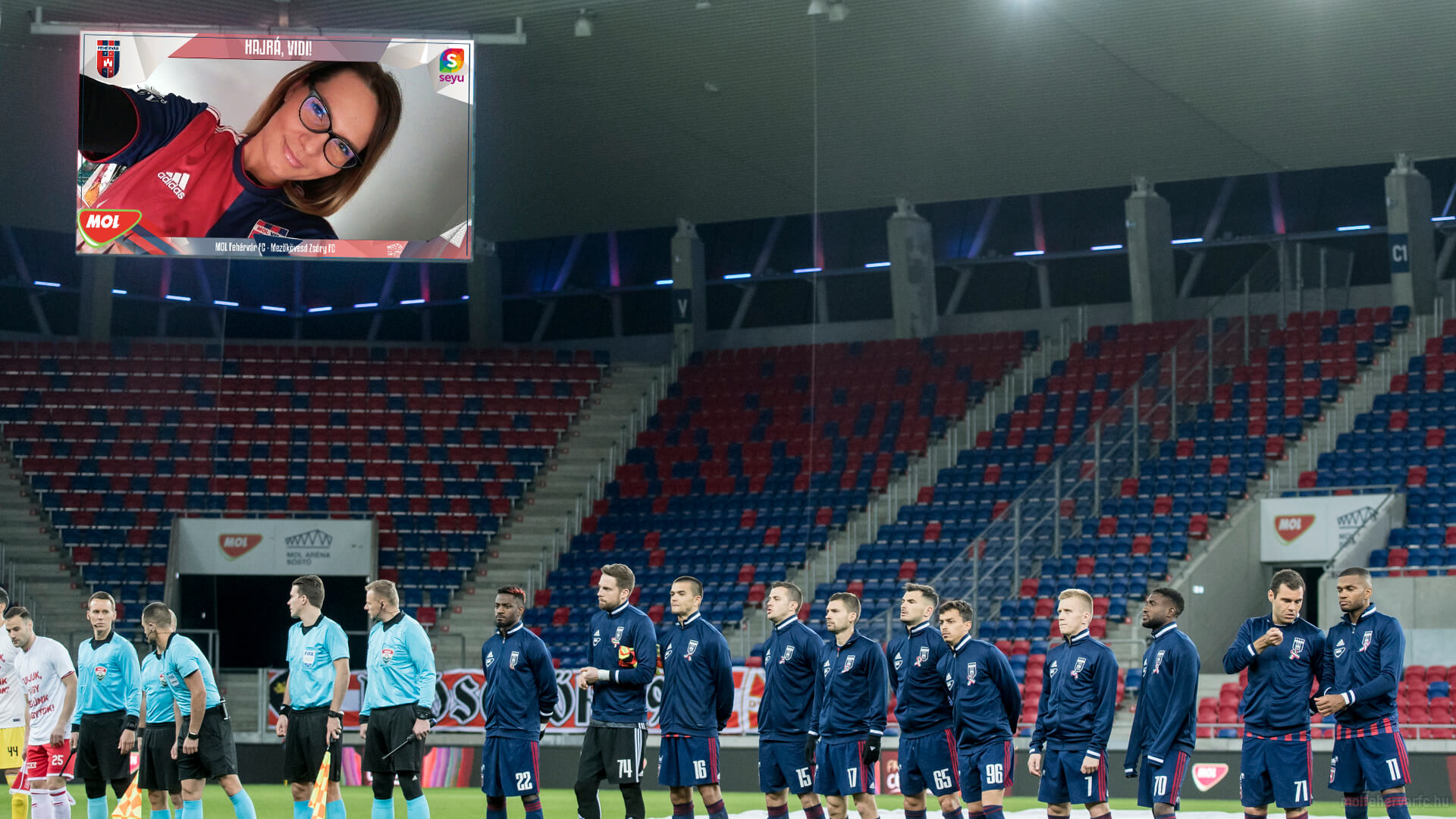
E-season ticket: the new buzzword of the sport business
E-commerce will be essential to keep the revenue streams alive, and involving, creative digital campaigns are crucial to maintain revenues. With the introduction of e-season tickets, clubs can make up for some of that huge revenue loss mentioned earlier. For example, a bundle of digital solutions could be exclusively made available for e-season ticket holders as part of a VIP remote fan experience. Subscribers could receive the starting line-up earlier, participate in exclusive quiz games with special prizes and display their passion in the stadiums before and during matches in real-time. Giant screens are also purposeless for the next months, at least in their everyday function. Why not utilise them to involve fans in matchday entertainment?
These are only a few ideas, the creative possibilities are endless. The turning point is here. There will be losers and winners, just like on the pitch, but clubs with a holistic digital approach now could not only effectively handle the crisis and keep huge amounts in their pockets but gain competitive advantage on the market for the next years as well.
Seyu is an IT solution that helps sport industry partners to generate more revenue on already sold commercial surfaces by building a desired emotional bridge between brands and fans. Executing this in a way that enables sport organizations to tap into the huge spending power of remote fans while generating a new kind of consumer data and accelerating their MARKETING-PR-CSR communications. Seyu is an easy to implement, 150+ events proven, AI assisted solution which is using sport industry partners’ already existing IT infrastructure to allow fans around the world, through a moderated channel, to post their photos on to the LED boards and other screens in the stadiums on matchdays, and share them instantly on social media in branded frames.



